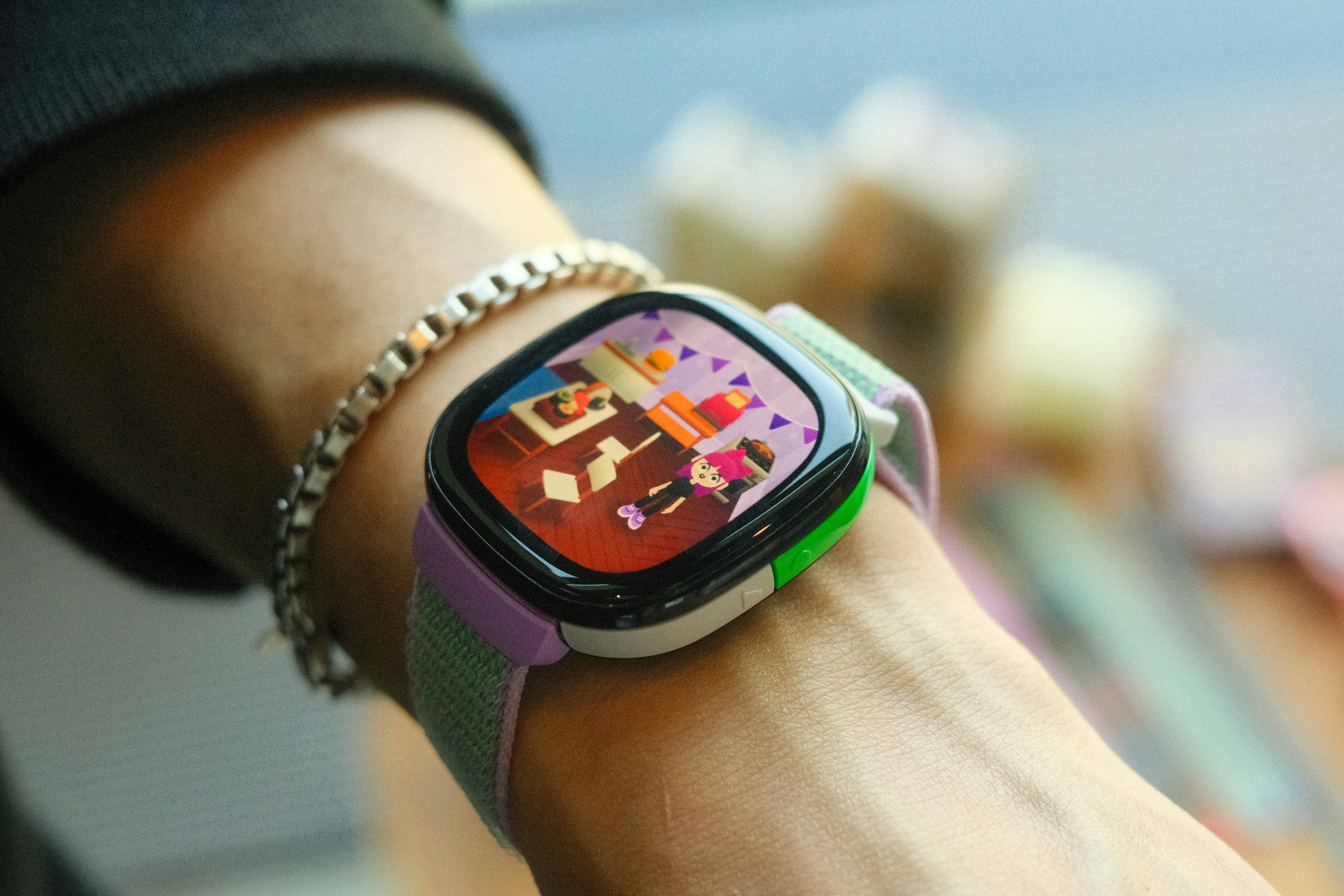
What would a smartwatch look like if Nintendo, Google, and Fitbit came together to build it? According to Google, it’d look like the new Fitbit Ace LTE launching on June 5 in the Google online store and on Amazon.
“Two-thirds of [hundreds of parents included in beta testing] have said their kids are exercising more,” Anil Sabharwal, Google Vice President, GM Health and Wearables, tells Inverse during a product briefing last week. “We’ve solved a couple of really important problems, and we’ve done it in a really responsible way.”
To be clear: Nintendo has nothing to do with the Fitbit Ace LTE. The $230 Android-powered smartwatch is made for kids (7+), but Sabharwal, who has two young children of his own within the demographic, tells me everything from the band mechanism to the software interface was inspired by Nintendo… and Tamagotchi virtual pets.
One look at the Fitbit Ace LTE, and I could immediately see similarities between the device’s “Eejie” avatars and those from Nintendo’s Animal Crossing and Miis, the avatars that everybody was obsessed with on the Wii console. Some of the mini-games that wearers play on the smartwatch, like the kart racing game Pollo 13 Space Race, which then unlock a new level or area by making them walk steps or get their heart rate up (through whatever means such as playing basketball or doing jumping jacks or riding a bike), even resemble Nintendo games like Mario Kart.
While us adults are still waiting for Google to deliver a Pixel Watch with Fitbit health and fitness integrations that smokes the Apple Watch and Galaxy Watch, Google at least seems to have figured out how to create a smartwatch, built from the ground up, for kids. I’m not going to lie: I wish adult smartwatches were as fun as the Fitbit Ace LTE.
Nintendo Influence
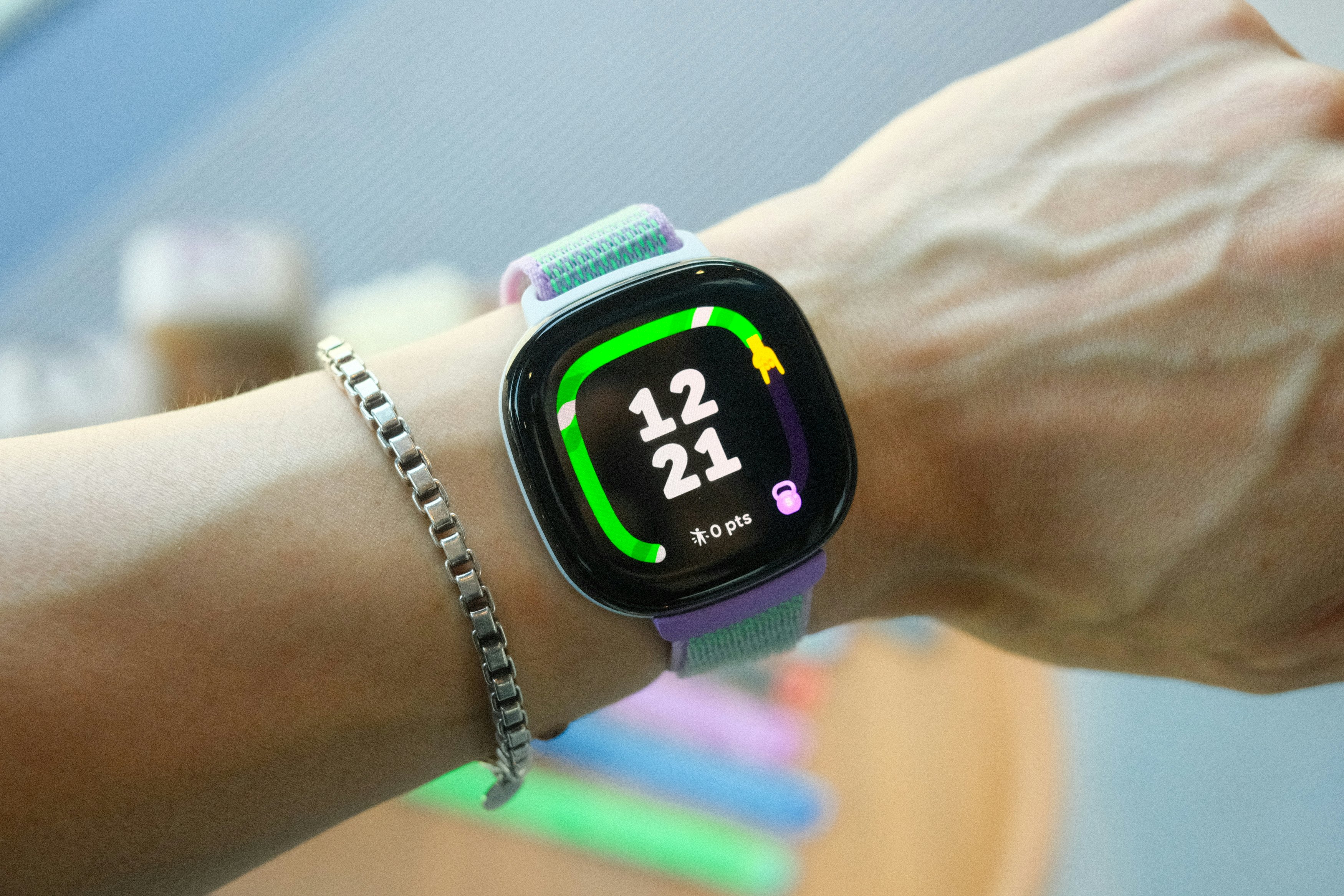
From a hardware standpoint, the Fitbit Ace LTE isn’t all too different from the Pixel Watch 2. It’s got the same celectrical sensors, including the heart rate monitor; the battery lasts around 16 hours, according to Sabharwal.
Naturally, as a smartwatch for kids, it needs to be rugged enough to survive life on the playground. On top of its 5ATM water-resistance rating (durable enough to survive a washing machine), the screen is made of scratch- and dust-resistant Gorilla Glass 3, and there’s a plastic bumper that snaps over the display for added protection. For parents, there’s one nice convenience: The Fitbit Ace LTE uses the same puck charger as the Pixel Watch 2 and Fitbit Sense and Versa smartwatches.
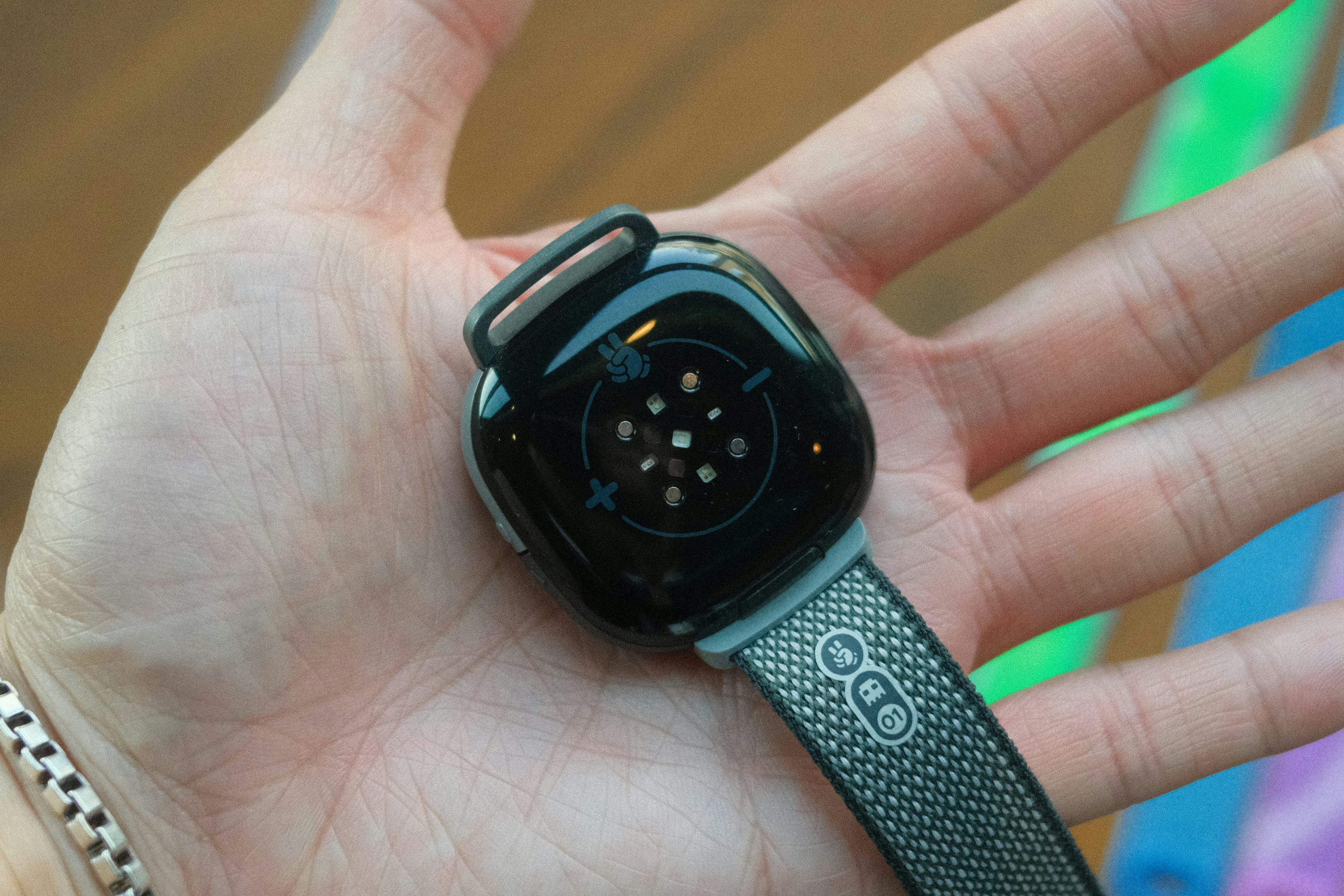
The whole case is made of recycled plastic and the bands from recycled yarn. Even the packaging for both the smartwatch and band is made of recycled paper. It’s something to feel good about.
The bands are where Google put in a touch of Nintendo-esque thoughtfulness into the hardware. Unlike the watch bands for the Pixel Watches that can be finicky to attach and remove, the Fitbit Ace LTE bands snap into the smartwatch easily with a very satisfying click.
“We call [the band connection mechanism] ‘the cartridge,’” Sabharwal says while blowing on the band’s connector, mimicking the way everybody used to blow on NES and SNES game cartridges to get them to boot up. “It’s inspired by old Nintendo cartridges.” I break his heart a little when I tell him that blowing on the old cartridges didn’t actually do anything; it didn’t remove any dust at all. He’s a good sport and laughs off the factoid.
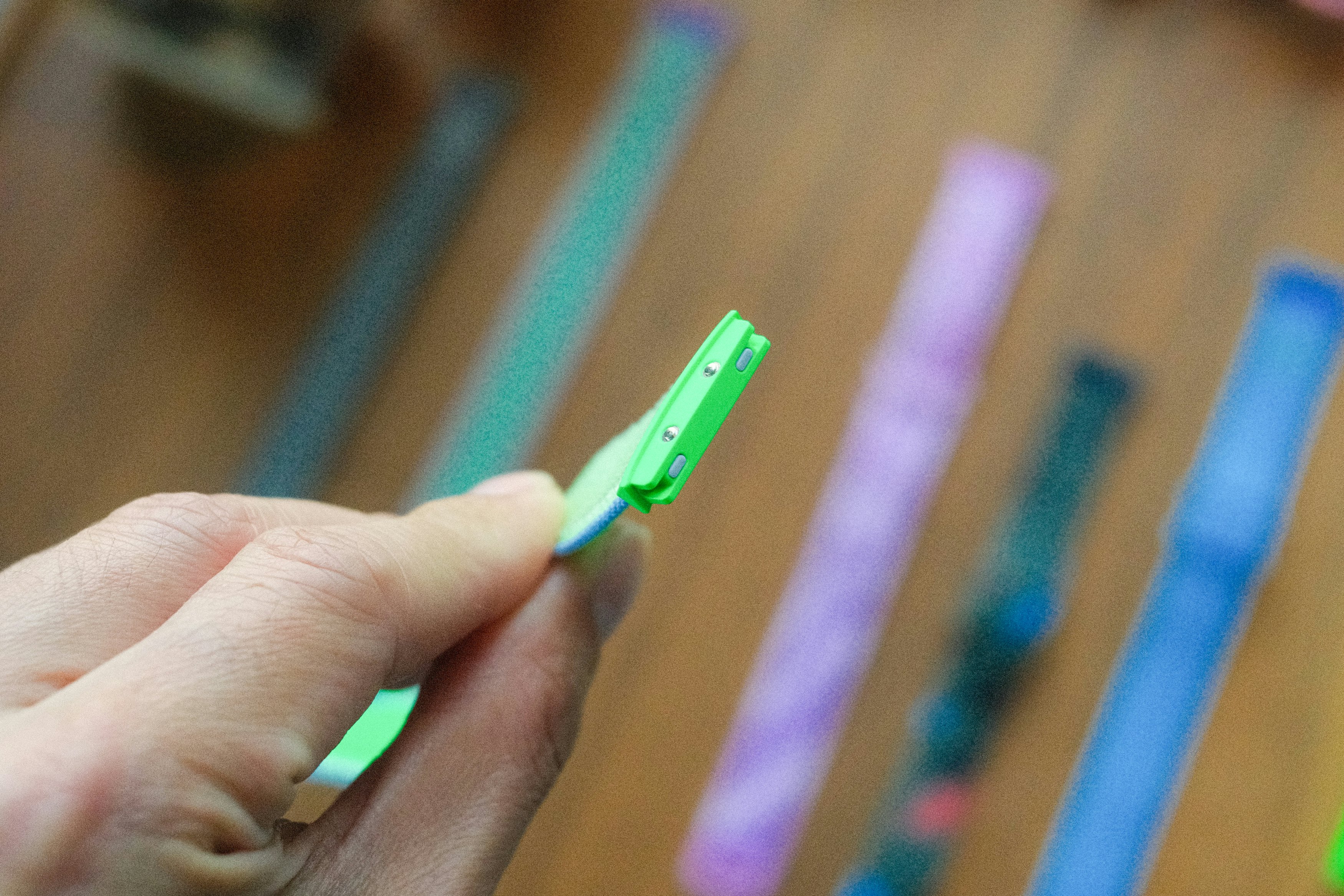
And just like many Nintendo products, there’s a collectible element to the bands. Purchase additional bands ($35 each) and when you connect them to the Fitbit Ace LTE, you’ll instantly unlock a new Eejie avatar, exclusive items, and even different elements on the watch face. There will be six bands in different colors and patterns, sold in limited volume at launch, and new ones will made available in the future. For kids, the collectible and trading aspect could be appealing in much the same way collecting and trading Pokémon cards is. The good thing is that there’s no DRM to the bands; one band can be shared with any Fitbit Ace LTE to unlock the special avatar and items.
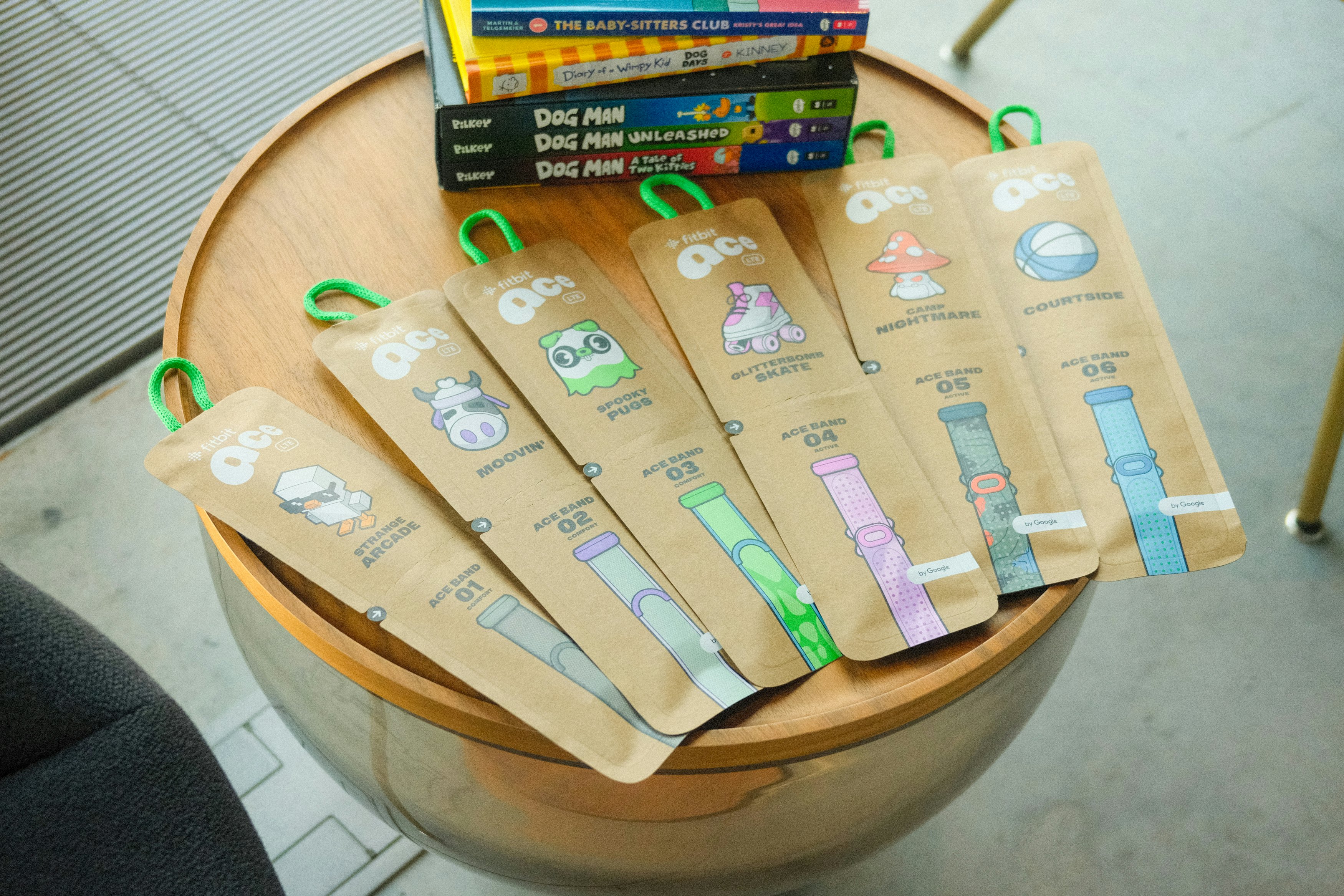
The Nintendo influence is more than hardware deep. As I said earlier, the software has Nintendo and Tamagotchi written all over it. Instead of activity rings, like you’d find on an Apple Watch, the watch face has a colorful activity “noodle” with designs like a snake that’s chasing a bug or an arm flashing the peace sign. Again, it’s a UI that’s made for kids, though, adults wouldn’t find it too childish, either. At least I don’t.
... the software has Nintendo and Tamagotchi written all over it.
Press the top button (there are only two on the right side of the watch case) and you’ll launch into basic “communications” functions like device settings, phones, call, messaging, etc. Press the bottom button and you’ll open into the “home screen” which is nothing like what you’d find on adult smartwatches. Instead of widgets or apps, the home screen is a game carousel with the mini-games. The Fitbit Ace LTE is launching with six games, but Google plans to release two to three games every quarter as part of the “Fitbit Arcade” service that’s included with a monthly “Ace Pass” subscription fee (more on that later).
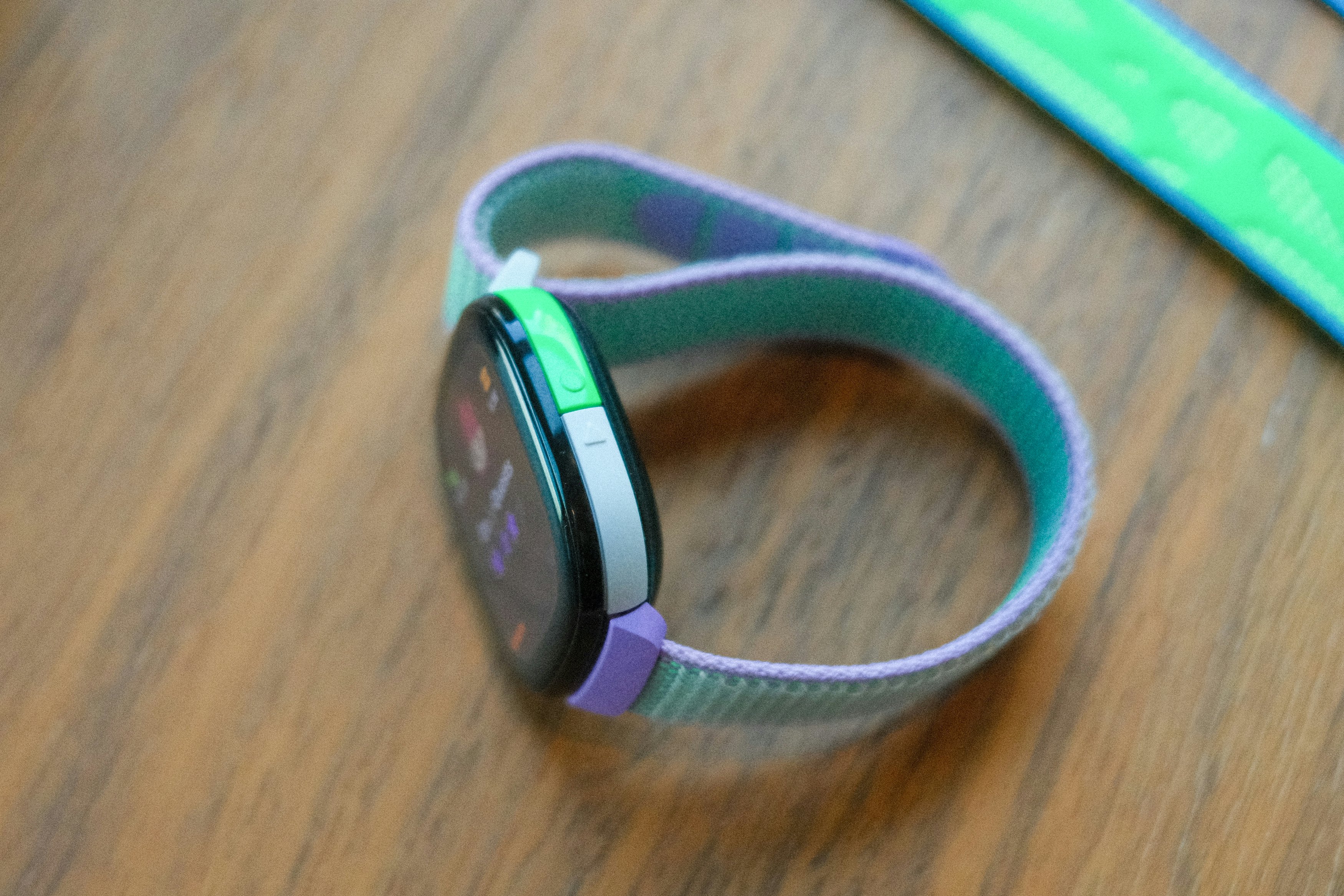
The mini-games — like the Mario Kart clone where you control a chicken driving a bathtub “kart” in space by tilting your wrist left and right, or Smokey Lake, a fishing game where you flick your arm back as if you’re readying a fishing pole and then thrust it forward until you feel the vibration of a caught virtual fish — are part of what Google is calling “interval-based gaming.” Similar to high-intensity interval training (HIIT) where you alternate between short and intense cardio exercises and resting, the mini-games on the Fitbit Ace LTE exist are meant to be played for two to three minutes, five to 10 times a day to “motivate activity,” Sabharwal tells me.
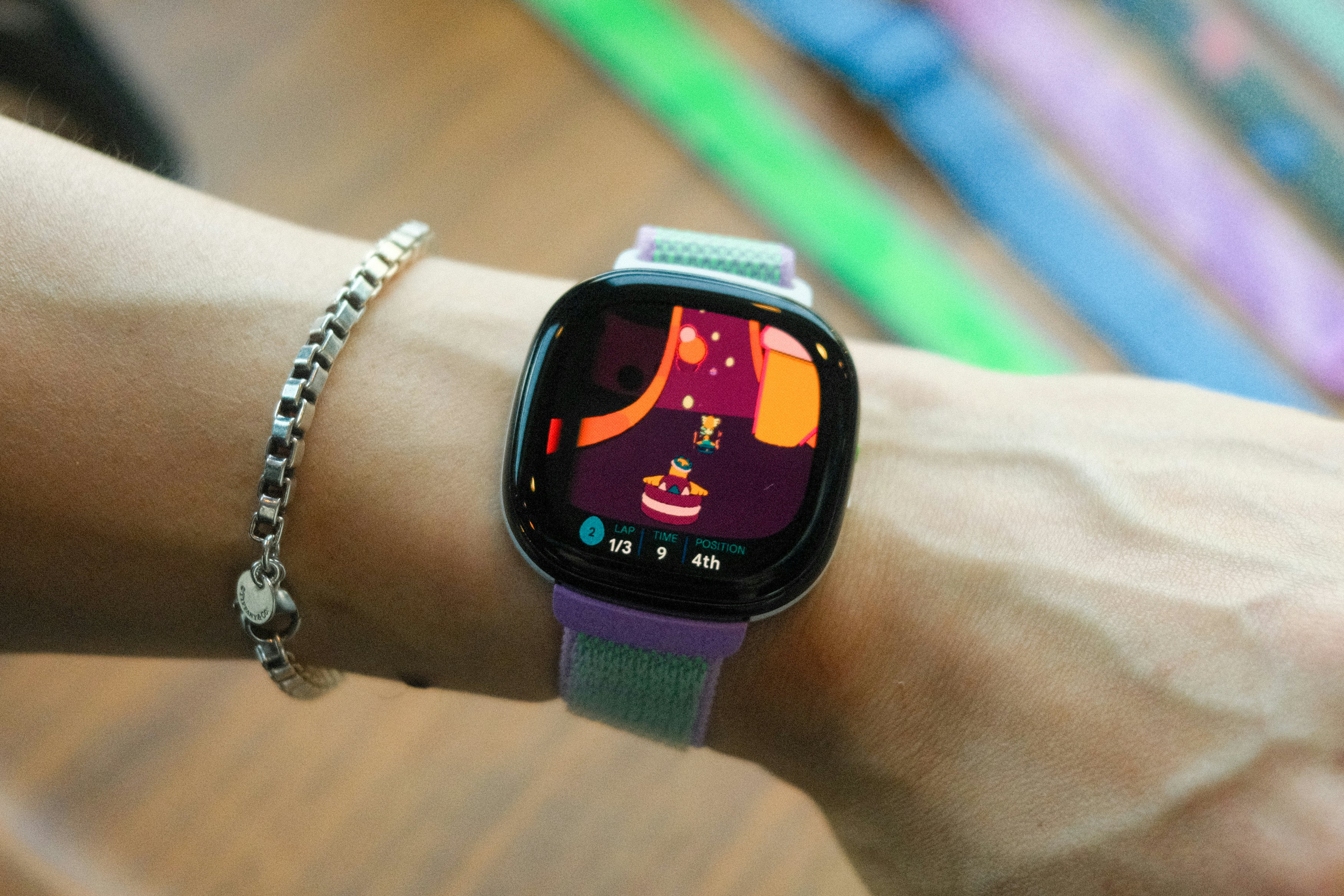
“Screen times are through the roof, 80 percent of kids, according to the World Health Organization are not meeting their daily active goals,” Sabharwal says. Instead of giving kids an iPad to pacify them or telling them to “go outside and play,” today’s tech-addicted kids need motivation to move. He thinks that the right combination of gamification and wearable tech could be a meaningful catalyst. The way the Fitbit Ace LTE’s game world is set up, you’re basically tricking kids into exercising.
Kids play the mini-games, which then tell them to “walk” their Eejie’s around the virtual map to get to other levels. They get their exercise in with steps or physical activity and playing mini-games or completing fitness missions earns them digital arcade tickets that they can use to buy new items to decorate their rooms.
“The only way to advance the games is to actually move.”
“The narrative of the game will encourage you to go out and be active. Go play, go move. and then come back and continue the [mini-games],” Sabharwal says. “The only way to advance the games is to actually move.”
Gamifying fitness isn’t new. Nintendo has been tricking people into exercising for ages with games like Wii Sports, Wii Fitness, and Pokémon Go. Bandai has done something similar to the Fitbit Ace LTE with its Digimon Vital Bracelet fitness tracker, though it’s not quite as well executed. Google and Fitbit giving it a stab at the issue suggest that kids are too sedentary. Gotta trick them into ditching their iPads!
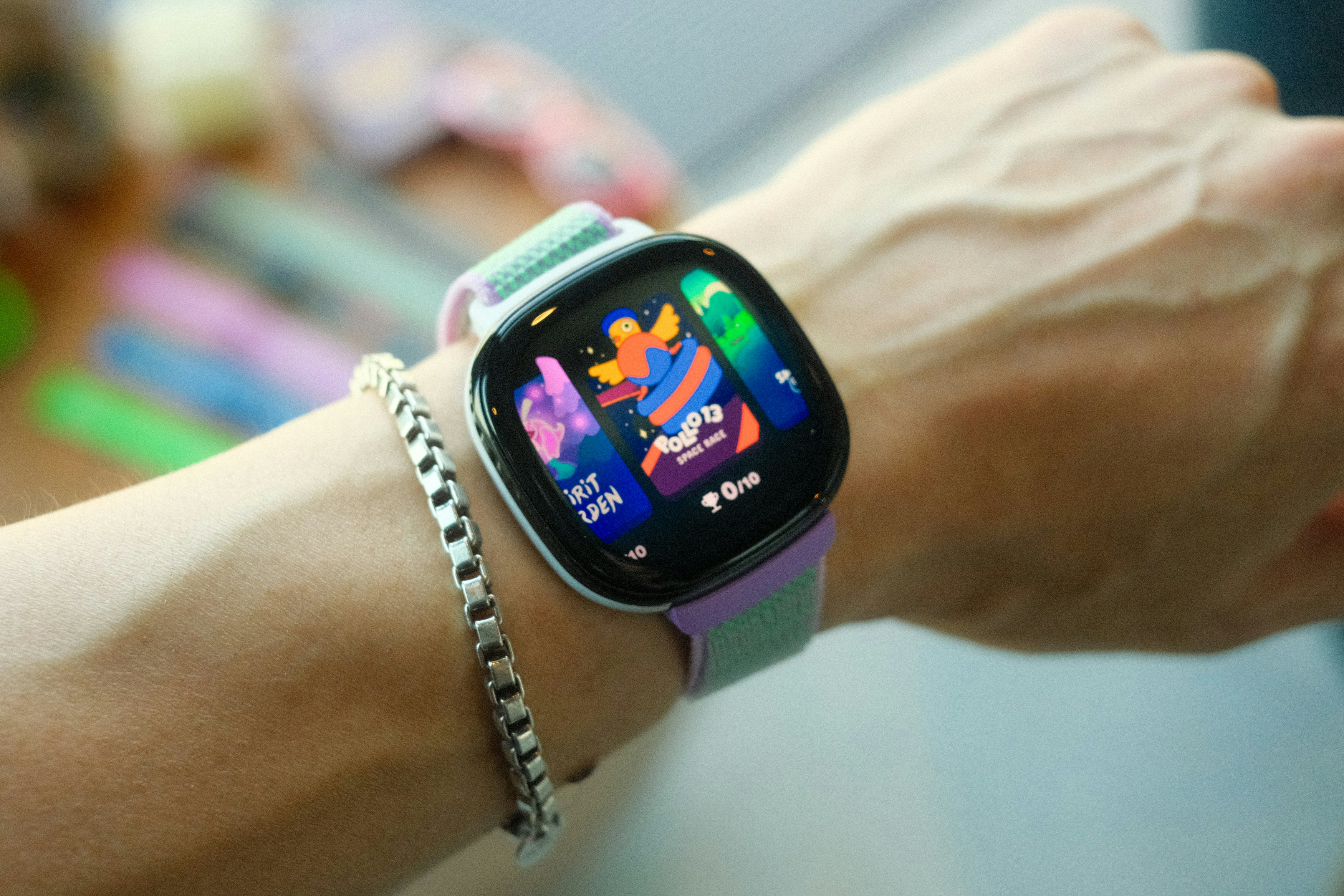
From my brief hands-on trying the mini-games like Pollo 13 Space Race and Smokey Lake, I have to admit they’re kind of fun. I don’t think I would have felt the same, though, if the controls weren’t so responsive. Sabharwal says Google worked with game studios to build custom “full Unity-based 3D graphics” and controls that used all of the various sensors, including the haptics and accelerometer, to offer a short-length gaming experience that’s made natively for smartwtches.
There’s a surprising amount of depth to the gamified fitness interface. Bit Valley is the equivalent to a map and inventory view or menu within an RPG game. Tap on a house and you can open up a shop to buy new virtual items using the tickets you’ve won or visit your Eejie’s virtual room, which you can customize to your heart’s content. Loading up your virtual rooms is the slowest part of the Fitbit Ace LTE (taking around 10 to 15 seconds to display) that I observed. Not surprising considering they’re all 3D rendered… on a smartwatch.
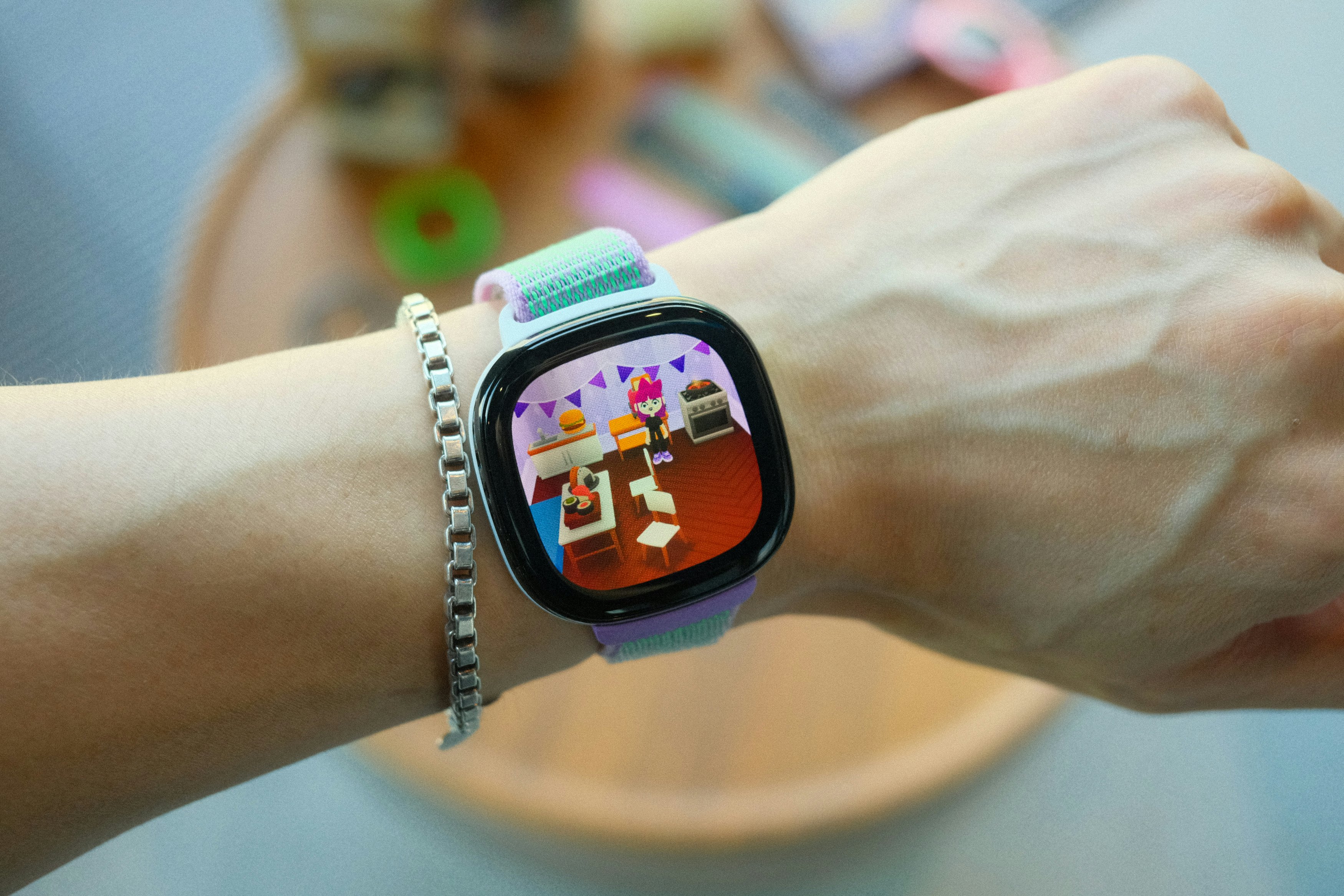
“Bit Valley is a bit little bit like Animal Crossing. It’s a little bit of The Sims. It’s very much this idea of a Tamagotchi on your wrist,” says Sabharwal. “The Eejie is essentially this virtual buddy that you can customize… and your job is to keep it happy. You visit it every day and you buy it items and things like that.”
What even is an Eejie? I had to ask. Sabharwal says they started with “i-j-i” and the dots in the I’s looked like people, which resembled a “community valley” so that’s what they went with.
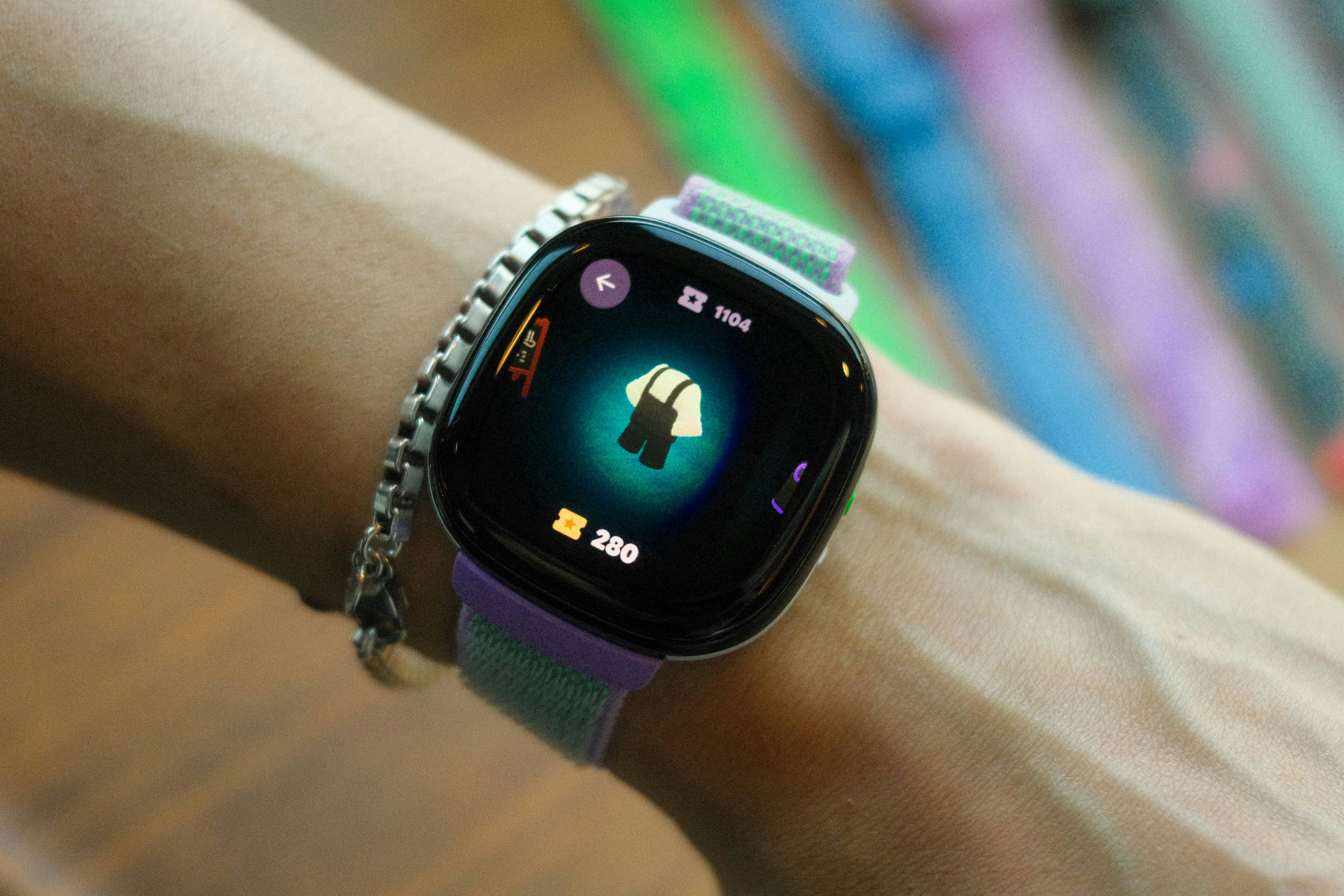
As Sabharwal walked me through Bit Valley and all the various customizations and things you can buy and play and do on the Fitbit Ace LTE, I started to feel overwhelmed. Will 7-year-olds really understand all of this “gameplay” hidden behind various mini-games and virtual rooms? Sabharwal says they did testing with over 500 kids to “validate” the right amount of gameplay and incentivization for buying items.
“When you’re a kid, you need the ability to demonstrate how advanced you are, what level are you on? What have you earned in the game? Oh, you've played 30 games and completed them? I've only played two games and completed them. You’re you’re an expert level, I’m a novice level.”
Competitive spirit, whether with friends, or parents or guardians, is always a good way to motivate kids into doing things they don’t want to do! Leaderboards and challenges that kids can have with their friends wearing a Fitbit Ace LTE are in the works. For now, the only competitive aspect of the smartwatch is a good old-fashioned one: boasting in person.
A Pricey Entry Fee
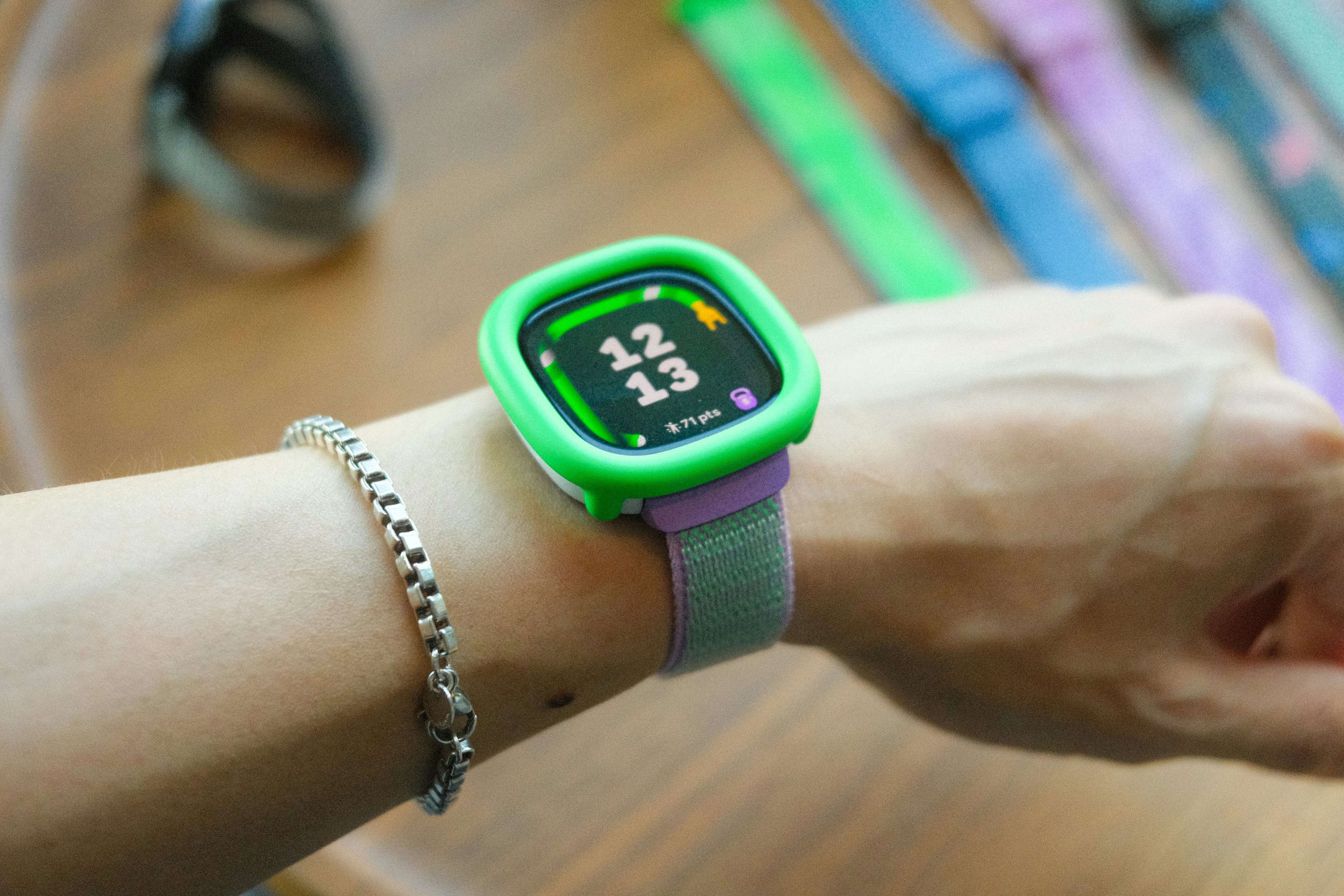
By the end of my hour-long demo, I’m sort of sold on the Fitbit Ace LTE. I love video games. I love Nintendo. I love Tamagotchis. I like to exercise to a lesser extent, but do it because my bones are creaking and I want to live long enough to see teleportation, smart contacts, and all kinds of futuristic technology that we’ve yet to make a reality. Okay, maybe none of those things will happen in my lifetime, but you get the idea.
I’m liking a lot of what Sabharhal, who has spearheaded some of Google’s biggest products such as Chrome, ChromeOS, and Google Photos, has shown me, even though I’m absolutely not the Fitbit Ace LTE’s target demographic of 7 to 11-year-olds. I also like that the smartwatch works with both iPhones and Android devices. But then he rattles off the pricing and the monthly subscription fee: $230 for the smartwatch, $35 for extra bands (with the special digital items), and $10 per month for an “Ace Pass” subscription (includes LTE cellular connectivity, access to the Fitbit Arcade that adds new games every quarter, and parental controls). Suddenly, the Fitbit Ace LTE seems expensive. $385 for the smartwatch, an annual subscription, and one extra band is not pocket change for a children’s smartwatch. A Pixel Watch 2 starts at $350 for the Wi-Fi version and $400 for the model with cellular LTE. Even with a similarly priced cellular plan, a Pixel Watch 2 isn’t too far off.
Why shouldn’t smartwatches be fun to wear and engage with?
I don’t have children, so the cost might be lost on me compared to a parent or guardian who would happily pay a certain amount of dollars for a device that not only lets them keep track of and communicate with their kids, but also motivates them to move through gamification. I asked a few parent friends of mine who have children within the 7 to 11-year-old range what they thought of the pricing, and they told it’s hard to put a price wearable tech that provides them with peace of mind (safety and data privacy) when their kids are at school or on their own in the real world. Individual parents would have to weigh the pros and cons of the Fitbit Ace LTE compared to just getting their kids a cheap smartphone. Google’s offering a 50 percent discount off the Ace Pass until August 31, which knocks the annual price down to $60, and is also including a free band. But still… the overall cost of ownership over a few years is enough to give any parent pause.

“So many devices condescend to children or they’re adult devices that are just locked down for kids,” Sabharwal says. “If you want to build something for kids, you have to build it in a way that appeals to them… with personalization, collectibility, and gaming experiences.”
I ask Sabharhal whether Google would consider adding the Fitbit Ace LTE’s gamified fitness experience to Pixel Watches, even as a paid add-on subscription, so that adults could either enjoy it themselves or play with their kids (or nephews or nieces) without needing to get another smartwatch. Why shouldn’t smartwatches be fun to wear and engage with? Why should kids have all the fun and we grownups can’t get an Animal Crossing-like way to motivate us to stop sitting all day?
“The road map is very greenfield and I see a lot of opportunities,” Sabharwal explains about the potential for children moving on from a kid-centric smartwatch like the Fitbit Ace LTE to a more mature Pixel device. “I think there is a graduation opportunity that we’re looking at. It’s not that our aspiration wasn’t to build for adults, it’s simply that we think we’ve achieved a product that fits a really important need today.”



!["[T]he First and Fifth Amendments Require ICE to Provide Information About the Whereabouts of a Detained Person"](https://images.inkl.com/s3/publisher/cover/212/reason-cover.png?w=600)



